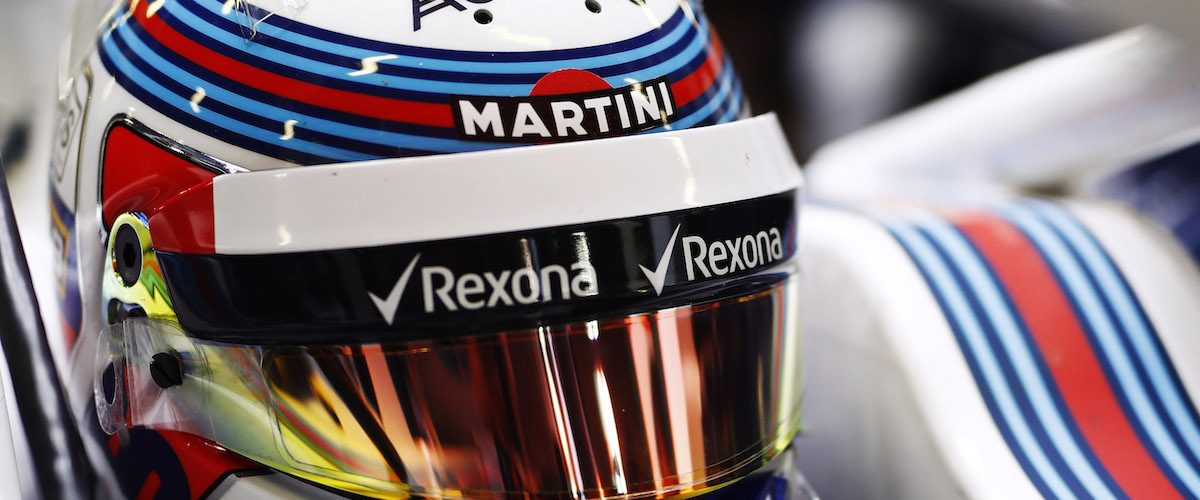Most fans of the sport have been flooding social media with their opinions on which cars have the sexiest plumage and the most aesthetically appeasing curves. And that’s even before the racing begins in earnest in Melbourne.
The most obvious change, of course, has been the hotly debated halo safety device – a measure introduced by the FIA to protect the driver’s head from flying debris, including detached wheels, and other high-speed accidents.
Yet the most important piece of equipment for any driver since the dawn on motorsport has been the shell that guards his or her head – the race helmet. And just as cars have undergone radical changes over the decades, so has this most vital pieces of equipment.
In the early days, as much attention was paid to head protection in racing as it was in American Football, a slim leather shell akin to what was worn by fighter pilots providing little safety in the event of an accident. Hard shells quickly took over in both sports – the now renowned manufacturer Bell producing the first mass-produced helmet in 1954 as this excellent video from Donut Media highlights.
Yet it wasn’t until the early 1960s that goggles for eye protection became the norm, followed by the introduction of fire retardant materials such as nomex and full-face visors that are now considered the norm.
Nowadays, the F1 helmet is not only a vital piece of safety equipment but also the calling card of the modern driver. It’s what defines the man under the mask and allows fans to identify their favorite driver from trackside or the comfort of their own living room.
Most conscientious fans of the sport may also have noticed driver showing off their favorite new designs before the new season. But what most fans will not be aware of is just how much goes into this complex design process where branding and visibility are of the utmost importance.
Known in F1 circles as the ‘King of helmet design’ Jens Munser is best known for designing all of Sebastian Vettel’s myriad monikers over the years and also those of Michael Schumacher. Jens designs for many current F1 drivers including Vettel, Daniel Ricciardo, Max Verstappen, Sergey Sirotkin, Nico Hulkenberg, Esteban Ocon and also Formula E world champion Lucas di Grassi.
Acronis was therefore delighted to talk to Jens about what goes into this most fascinating of processes and about what it takes to design the most beautiful of helmets.
“I wasn’t always an arty person,” admits Jens. “I started with motorsport because I was riding motocross in America and saw a lot of riders with nice helmets, so I looked for someone in Europe to paint my helmet. I found nobody so I decided to do it for myself and this was 25 years ago! People liked what I did so I found myself designing for drivers in four wheel categories, where I could earn more for my work.”
In stark contrast with car design, not much has changed in those 25 years since Jens started putting paint to helmet, although advances computer technology, lightweight paint pigments and air guns help elevate the process to more precise levels.
“It hasn’t changed too much with the process of pencil drawing but of course now we use stickers for logos, which at the beginning were all painted because no detailed print was available. The rest is pretty much the same as 25 years ago. We use the same paint but started to change the pigment for Michael (Schumacher) and make the paint stronger, lighter and more flexible against stones.
“In the beginning, we had 80g of paint for Michael but he wanted less. I said your helmet may not look as pretty but he said that doesn’t matter at the end of the race, just as Enzo Ferrari said about his engines back in the day!
“The important part of the process is to transfer the two-dimensional graphic to the three-dimensional helmet and that’s the most painstaking part. Here is where you need a good feeling for the lines. After this, you fill in the field with color, extra detail and then you’re ready. The process can take up to three days for the most complex designs.
Sergey Sirotkin today during #F1Testing. pic.twitter.com/fpANpB9GkC
— Jens Munser Designs (@JMD_helmets) March 6, 2018
“Of course, the advance in computer technology makes the process easier now with plotting because you cannot cut a name by hand. In the beginning, it was only a name on the helmet, nothing more. The paint is a normal acrylic base and is flame proof. The helmet, of course, is fire resistant but nobody tests the paints, which we now have to do.”
Under current F1 regulations, drivers are only permitted one helmet livery change per season and driver numbers must be clearly visible. Not that it doesn’t keep Jens busy, as drivers will take several helmets to every grand prix… And, like every skilled artist, he is proud of his work.
“The helmet I’m perhaps remembered best for is the LED sparkles for Sebastian Vettel in Singapore. My background is in electronics, so it was a cool project for me. I was worried that some of the wiring may possibly come loose during the rigors of the race but it worked out fine and generated a lot of talk in newspapers and the internet. None of this is allowed now but it was cool at the time.”
Top image: © Glenn Dunbar/Williams F1.




Interesting story – Helmet Design for Sebastian Vettel for the German Grand Prix at the Hockenheim on July 22, 2018. http://www.christophniemann.com/portfolio/helmet-design-for-sebastian-vettel/